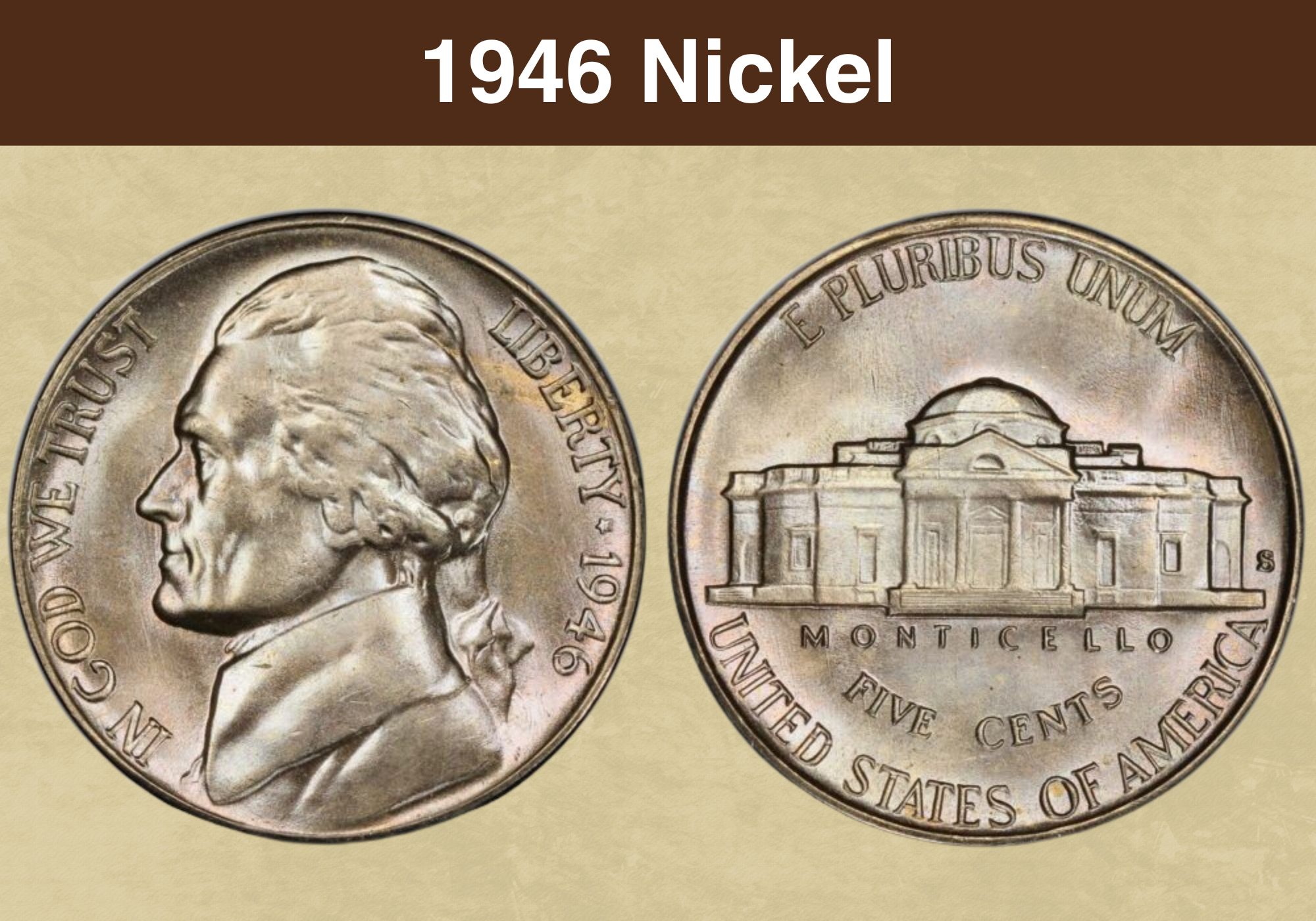
Coin Value Contents Table
Are you considering adding a 1946 nickel to your coin collection?
Do you own a 1946 nickel and wonder whether it is worth any money?
You’ve come to the right place! We wrote this article for collectors wanting to learn about the 1946 nickel value. In addition, the fascinating history, you will also learn about the features to look at when grading your 1946 nickel and discover unique errors that can be worth hundreds of dollars.
So, let’s jump in and get started!
1946 Nickel Value Chart |
||||
| Mint Mark | Good | Fine | Extremely Fine | Uncirculated |
| 1946 No-mint mark Nickel Value | $0.10 | $0.20 | $0.30 | $425 |
| 1946- D Nickel Value | $0.10 | $0.20 | $0.30 | $450 |
| 1946-S Nickel Value | $0.10 | $0.25 | $0.40 | $2,550 |
The History of the 1946 Nickel
The nickel has a long history, dating back to 1886 when the Shield five-cent nickel took over from the silver half dime.
The modern nickel, including the 1946 nickel is the current version of the Jefferson five-cent coin. This coin was firs struck in 1938 in commemoration of 200th anniversary of the Lewis and Clark Expedition.
At the start of 1938, the Mint launched a competition to find a designer for a new nickel that would replace the Buffalo nickel. At the same time, the Mint also anticipated President Thomas Jefferson’s bicentennial birth anniversary in 1943 to introduce the new nickel that would be aptly named Jefferson nickel.
Felix Schlag was the competition’s winner and the Mint commissioned him to create the new nickel’s design that would feature Jefferson the reverse and his iconic Monticello house on the reverse. Schlag based his portrait on Jefferson’s bust sculpted by Jean-Antoine Houdon.
The Mint began producing the coin in October 1938 and the nickels were released into circulation by November. Legend holds that these coins were hoarded in large numbers and only began appearing in circulation in 1940.
In the 1940, at the peak of the World War II, the Mint sought to minimize the nickel content in coin. Following authorization by Congress, to strike nickels comprising 50% silver and 50% copper, the Mint instead opted for nickels containing 9% manganese, 35% silver, and 56% copper in 1942. This was also the first time the mint mark P, which stands for Philadelphia, was placed on a widely circulating U.S. coin. However, in 1946, the nickel returned to its pre-war composition of 75% copper 25% nickel.
Also read: Top 10 Most Valuable Nickels Worth Money
Features of the 1946 Nickel
In this section, we’ll look at the identifying features of a 1946 nickel so you can know how to evaluate your coin on your own.
The Obverse of the 1946 Nickel
On the obverse of the 1946 nickel is Thomas Jefferson’s left-facing bust portrait with his hair held down in a low ponytail.
Our country’s motto, IN GOD WE TRUST, appears along the rim’s edge to the left. To the right, you will find the word LIBERTY and the date 1946 with a star separating the two.
The Reverse of the 1946 Nickel
The reverse of the 1946 depicts Jefferson’s house, known as Monticello. Schlag did a great job of capturing details such as the main staircases and the wing steps as well as the dome and roof.
The motto E PLURIBUS UNUM appears at the top around the rim’s edge. Underneath the house is its name, MONTICELLO, followed by the coin’s denomination, FIVE CENT, and the country’s name.
You will also notice the mint mark on the reverse. This is placed next to the furthest column on the right.
Other the 1946 Nickel
The 1946 nickel is made of 75% copper and 25% nickel.
This plain-edge coin weighs 5 grams and measures 21.20 millimeters in diameter.
Nickels from this year were struck at the Philadelphia, Denver and San Francisco mints. But, you will notice the mint marks D and S respectively, on the reverse. Coins struck in Philadelphia do not have a mint mark.
Also read: Top 17 Most Valuable Buffalo Nickel Worth Money
1946 Nickel Grading
Grading 1946 nickels is mostly focused on uncirculated examples as these have fewer contacts and are more lustrous and appealing to the eye.
When grading your nickels, check for a glossy and consistent luster; there should be no breaks in the surface luster as this would indicate wear from circulation.
There are some key areas to pay attention to when evaluating a 1946 nickel. Look at Jefferson’s hair, a high point that should demonstrate frosting and luster
The collar and shoulder, as well as the area above his eye are high spots prone to wear. Check these spots to ensure there is no sign of wear or dulling.
On the obverse, the high areas prone to luster-loss are the lines making at the triangles on Monticello’s roof. Check the column and the house’s foundation for signs of wear.
Another feature that collectors pay attention to are the Monticello steps. Jefferson 1946 nickels with visible or full steps are a rarity and very interesting to collectors. Full steps are more visible in mint state, uncirculated nickels, increasing the demand for these coins.
| # | Grade |
|---|---|
| 1 | Basal State-1 |
| 2 | Fair |
| 3 | Very Fair |
| 4, 5, 6 | Good |
| 7, 8, 10 | Very Good |
| 12, 15 | Fine |
| 20, 30 | Very Fine |
| 40 | Extremely Fine |
| 50 | About Uncirculated |
| 60 | Mint State |
| 65 | Mint State |
| 70 | Mint State |
Please check our grading guides to know your coin scale, It’s the necessary step to know the exact value of your coin.
Check out now: How to Grade Jefferson Nickel?
1946 Nickel Value Guides
So, is a 1946 nickel worth any money?
Well, this depends on the coin’s condition and its rarity. The truth is, 1946 nickels are quite common and you can easily find them in circulation. After all, the Mint struck millions of these coins, many of which were released into general circulation.
There are three varieties of the 1946 nickel. These are the:
- 1946 no-mint mark nickel
- 1946-D nickel
- 1946-S nickel
Let’s now look at the value of each.
1946 No-Mint Mark Nickel Value
With 161,116,000 nickels struck, the Philadelphia mint recorded the highest mintage in 1946. These are a lot of coins, which makes them quite common on the rarity scale.
Due to the high mintage, 1946 no-mint mark nickel in circulated condition are worth more or less their face value. You can expect between $0.10 and $0.55 for circulated nickels.
The Philadelphia nickels were poorly struck, like most other post-war nickels. This makes finding gem quality coins quite difficult. On the upside, even in mint state, these nickels are very affordable with one graded MS65 selling for about $20 and an MS67 bringing as much as $425.
The presence of full steps on the Monticello is something collectors consider when evaluating a Jefferson nickel.
No-mint mark 1946 nickels with full steps are rare but valuable with examples fetching as much as $1,400. The most expensive full steps specimen graded MS67 was auctioned for an impressive $8, 813.
1946-D Nickel Value
The Denver mint struck about 45,292,200 nickels in 1946, the second highest mintage that year. The Denver facility had always produced good quality coins well into the 1950s.
Compared to Philadelphia and San Francisco nickels, the ones from Denver are the best looking. Mint state and gem quality examples are readily available although they become scarce at MS67.
In circulated condition, a 1946-D is worth between $0.10 and $0.60. But this price can increase to $450 for an uncirculated example.
Full step specimens are highly sought-after as they can fetch as much as $750. One rare example graded MS67 was auctioned by Bowers and Merena for an impressive $8, 600 in 2006.
1946-S Nickel Value
At just 13,560,000 nickels, the San Francisco mint had the lowest mintage of the three minting facilities. These coins are scarcer than the ones struck in Philadelphia and Denver and can be identified by the S mint mark on the reverse.
Majority of the 1946-S nickels were hoarded by the roll in mint state so there are plenty of gem quality and proof-like example accessible to collectors.
These nickels were also struck using improved dies, resulting in pretty good-looking and longer-lasting coins, many of which have their luster intact despite being in circulation for several years now.
In circulated condition, a 1946-S nickel is worth between $0.10 and $0.60. Uncirculated examples in higher grades are worth much more, with an MS67 bringing in as much as $2,550 and proof-like examples fetching up to $5,000.
Also read: Top 17 Most Valuable Jefferson Nickels Worth Money
Rare 1946 Nickel Errors List
As we seen, 1946 nickels are not as profitable in circulated condition. But, a circulated coin with an interesting error can suddenly become very valuable; some errors can significantly improve the value of your 1946 nickel, if you know what to look for.
Here are some 1946 nickel errors worth money:
1946 Doubled Die Full Steps Nickel Error
Full steps are not really considered errors but are rather an indication on a well-struck Jefferson nickel. Doubled die errors, on the other hand, have always been fascinating to collectors.
A 1946 nickel with visible doubling on IN GOD WE TRUST is quite desirable. But what makes these nickels even more valuable is the appearance of full steps on Monticello. Doubling error and full steps is an excellent combination, resulting in a sought-after nickel.
A 1946 nickel with a doubled die Full Steps error can cost as much as $900 in the open market.
1946 Lamination Nickel Error
Lamination errors when metal chips off the coin’s surface due to impurities. The presence of impurities in the planchet creates weak pots, exposing the coin to chipping.
The majority of lamination errors on the 1946 nickels are visible on the obverse. These appear like tiny dings on the coin’s surface but are actually a punching error.
Collectors are willing to pay up to $250 for a 1946 nickel with a visible lamination error.
1946 Repunched Mint Mark Nickel Error
The repunched mint mark error is quite common among 1940 nickels, especially those struck at the Denver facility.
This error occurs when a new mint mark is punched on top of the existing one at a different angle. In this example the new D is punched horizontally over the existing D which stands vertically, resulting in a mangled mint mark.
A 1946 repunched mint mark error can be worth $100- $150.
1946 Die Crack Nickel Error
Die crack errors occur when a punching die cracks due to the pressure of the minting process.
If the die continues to be used, the small crack fills up with metal, which when impressed on the coin results in a raised line of metal on the final coin.
A 1946 nickel with a die crack error can fetch between $85 and $100 depending on the coin’s condition.
Also read: 14 Most Valuable Nickel Errors Worth Money
Where to Sell Your 1946 Nickel ?
Now that you know the value of your coins, do you know where to sell those coins online easily? Don’t worry, I’ve compiled a list of these sites, including their introduction, pros, and cons.
Check out now: Best Places To Sell Coins Online (Pros & Cons)
FAQ
How can you tell if a 1946 nickel is silver?
The 1946 nickel does not contain any silver. Rather, these coins are made of an allow consisting mainly of copper (75%) plus nickel (5%), like all post war nickels. Pre-war nickel did have some silver content but the coin’s composition changed to copper and nickel in 1946.
What makes a 1946 Jefferson nickel valuable?
The most valuable 1946 Jefferson nickels are uncirculated. Their circulated counterparts are extremely common and are only worth their face value. Uncirculated examples are therefore more desirable to collectors. Check that the coin’s luster is intact and consistent on the fields. Frosting on high points and the appearance of full steps indicate an uncirculated coin and add to the value of your 1946 nickel.
Where is the mint mark on a 1946 nickel?
Only the 1946 nickels struck in Denver and San Francisco have mint marks, D and S respectively. You can find this on the reverse next to one of Monticello’s columns to the far right. The nickels minted in Philadelphia are noticeable by their lack of a mint mark.

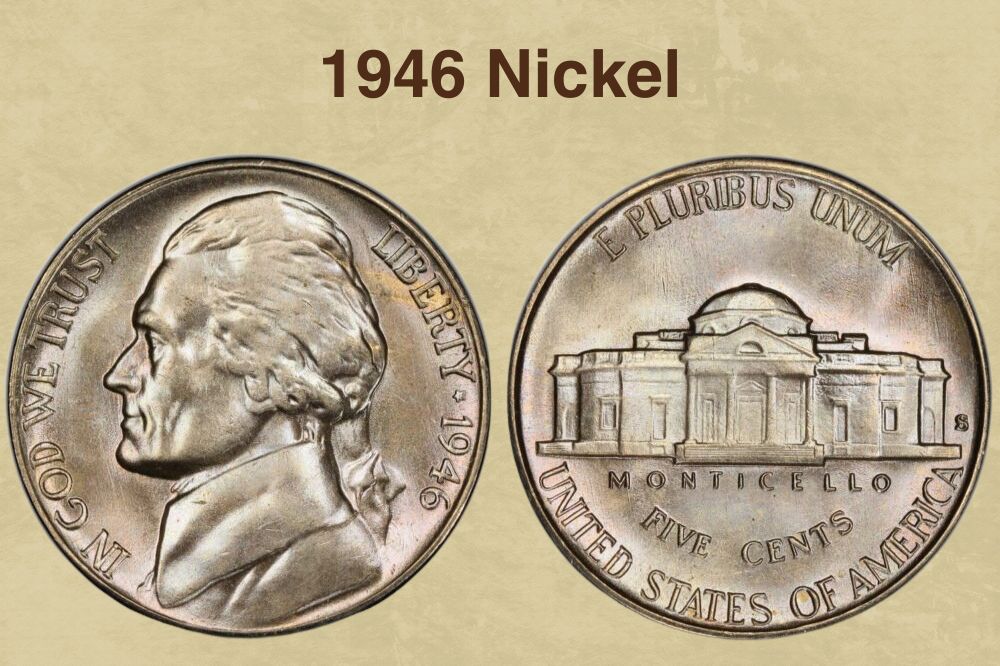
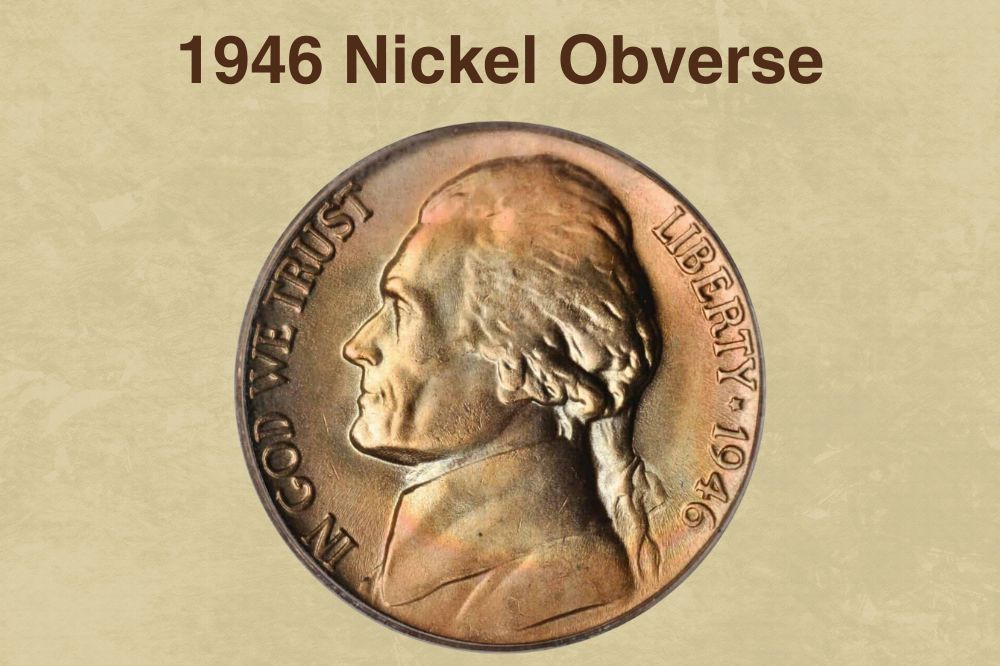
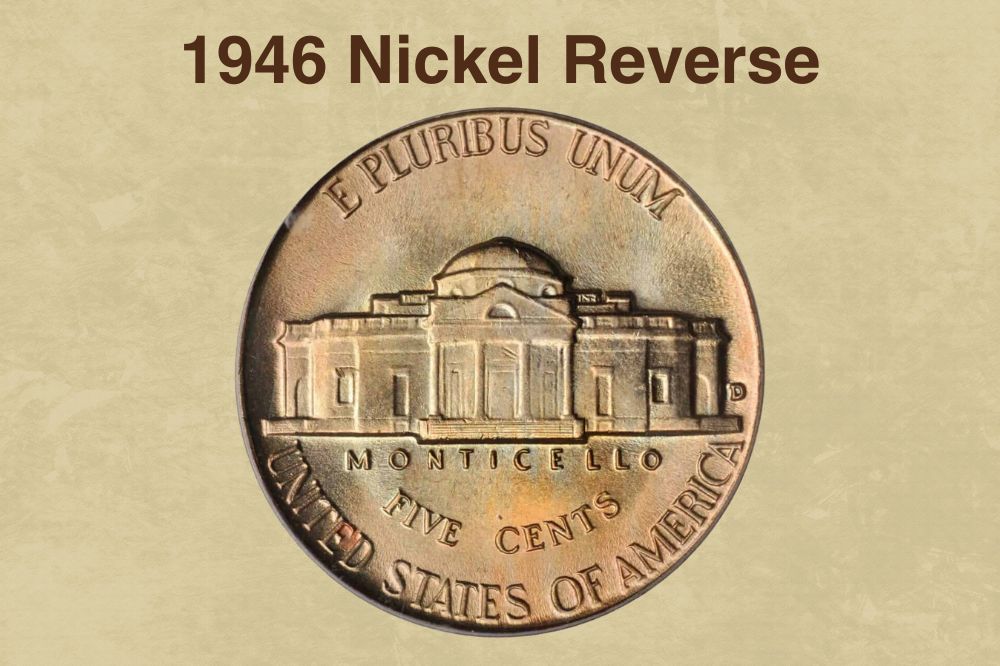
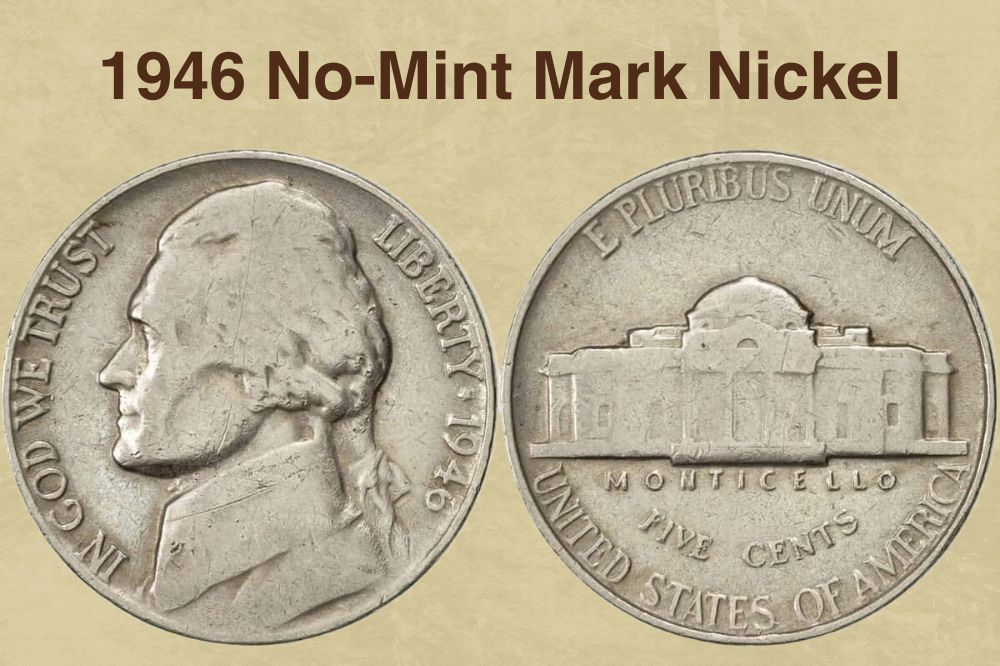
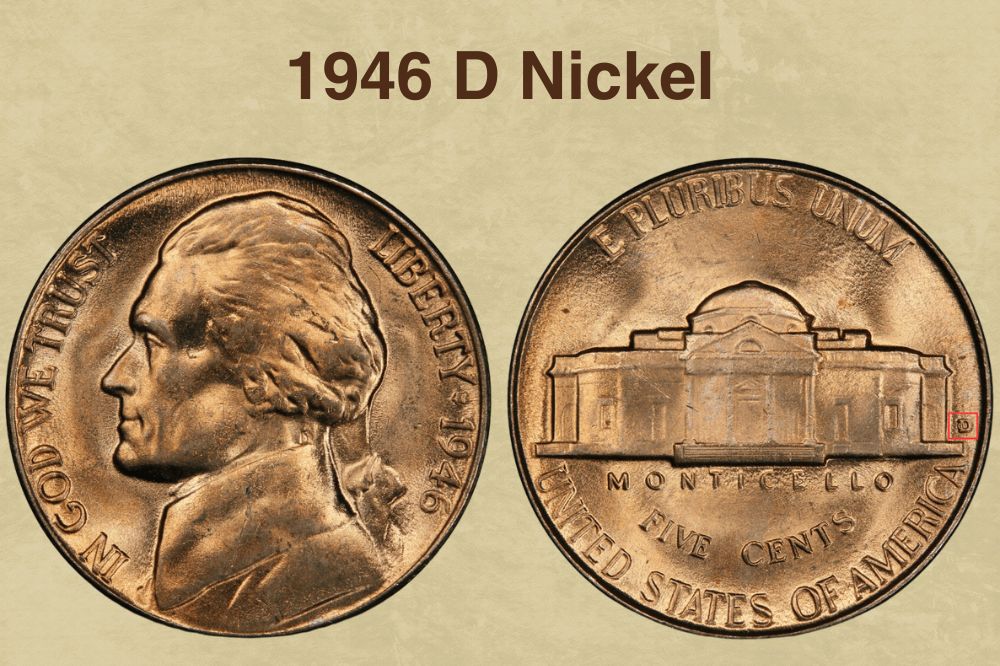
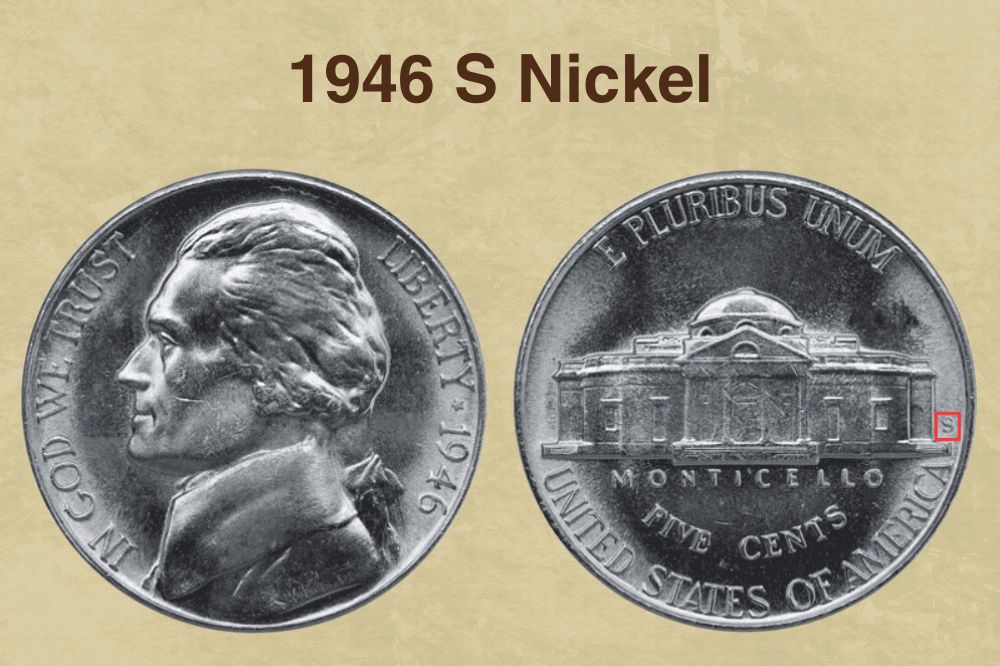
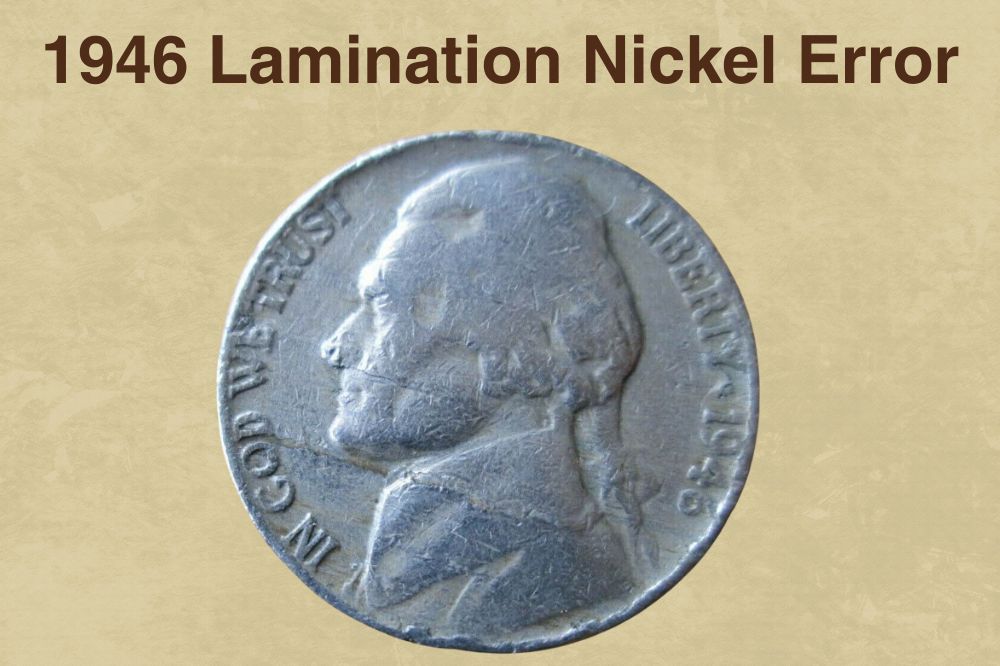
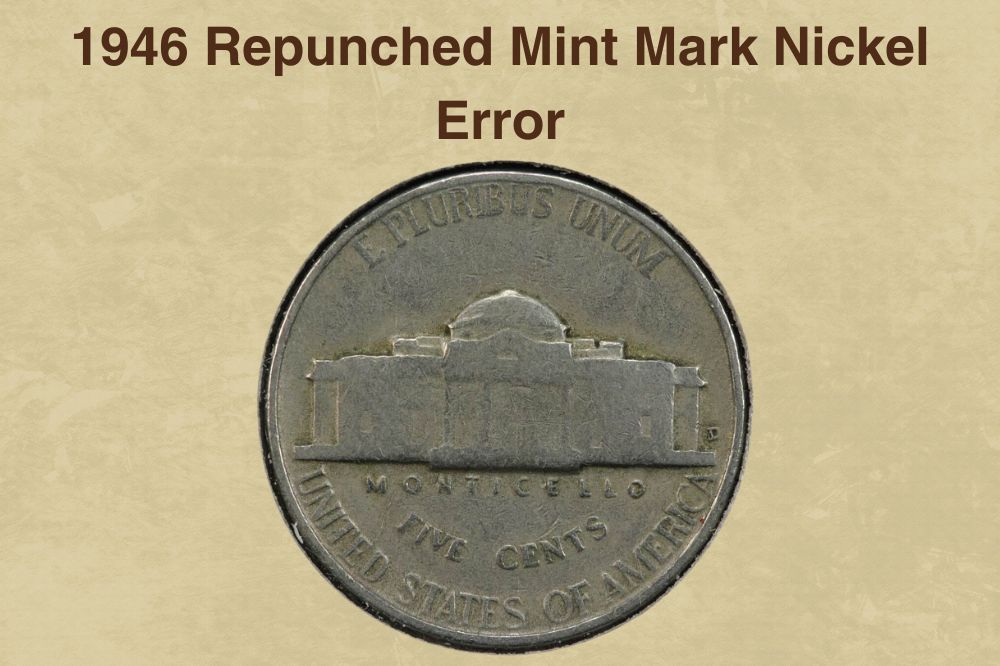
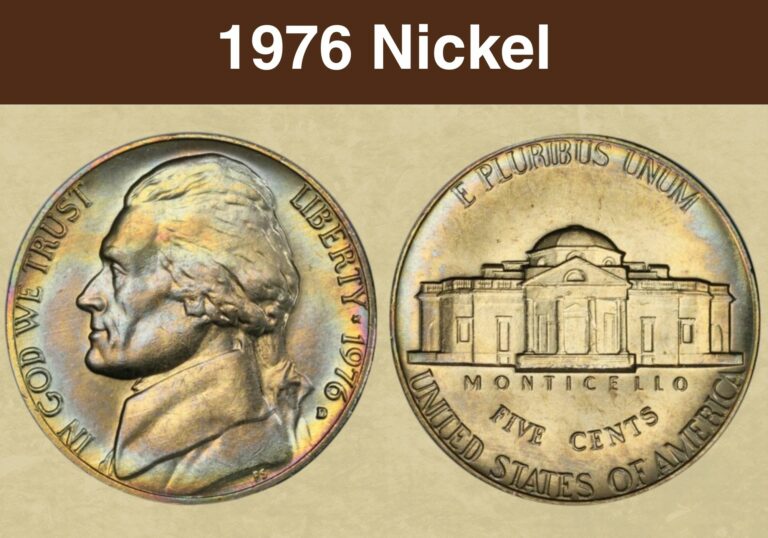
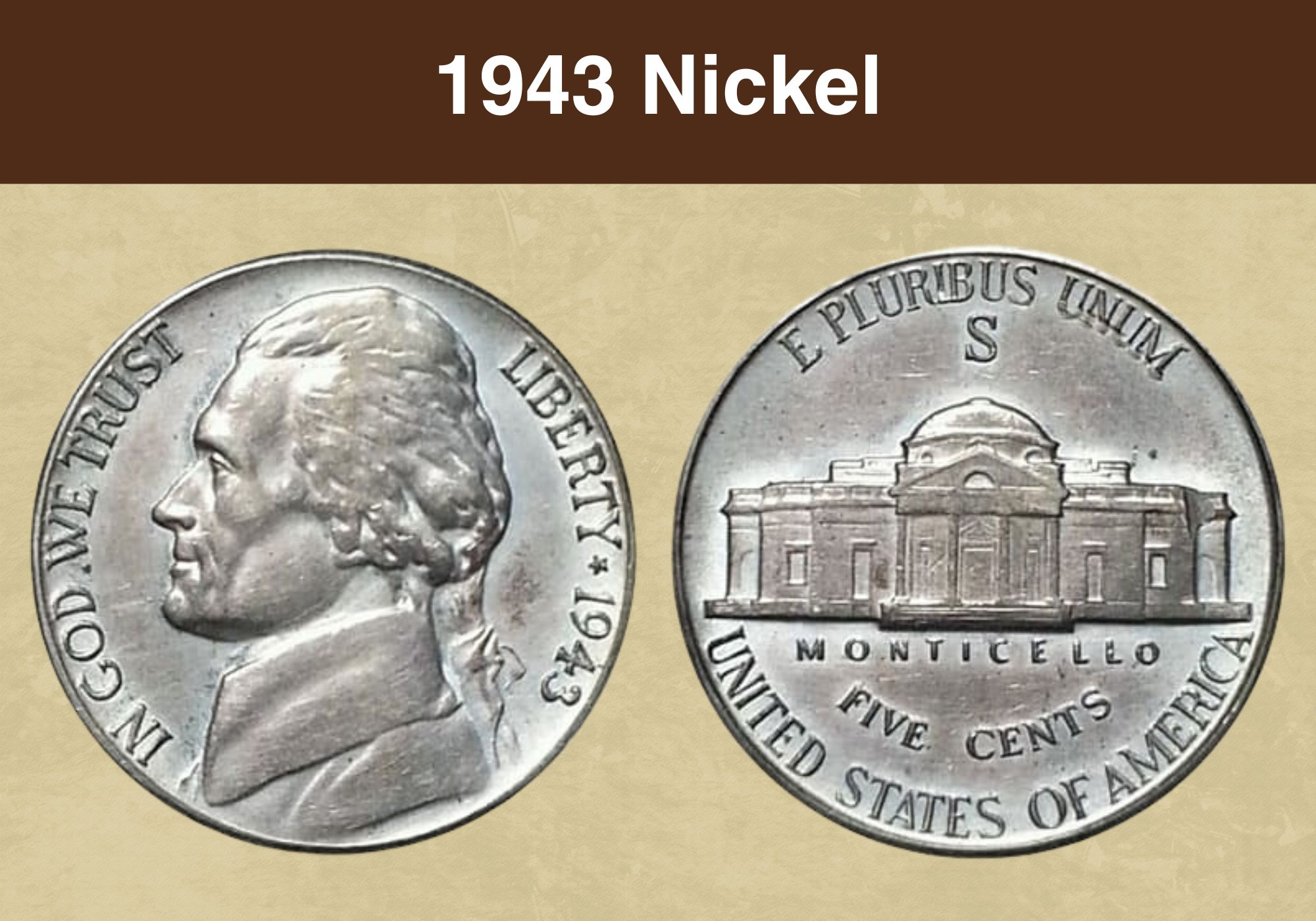
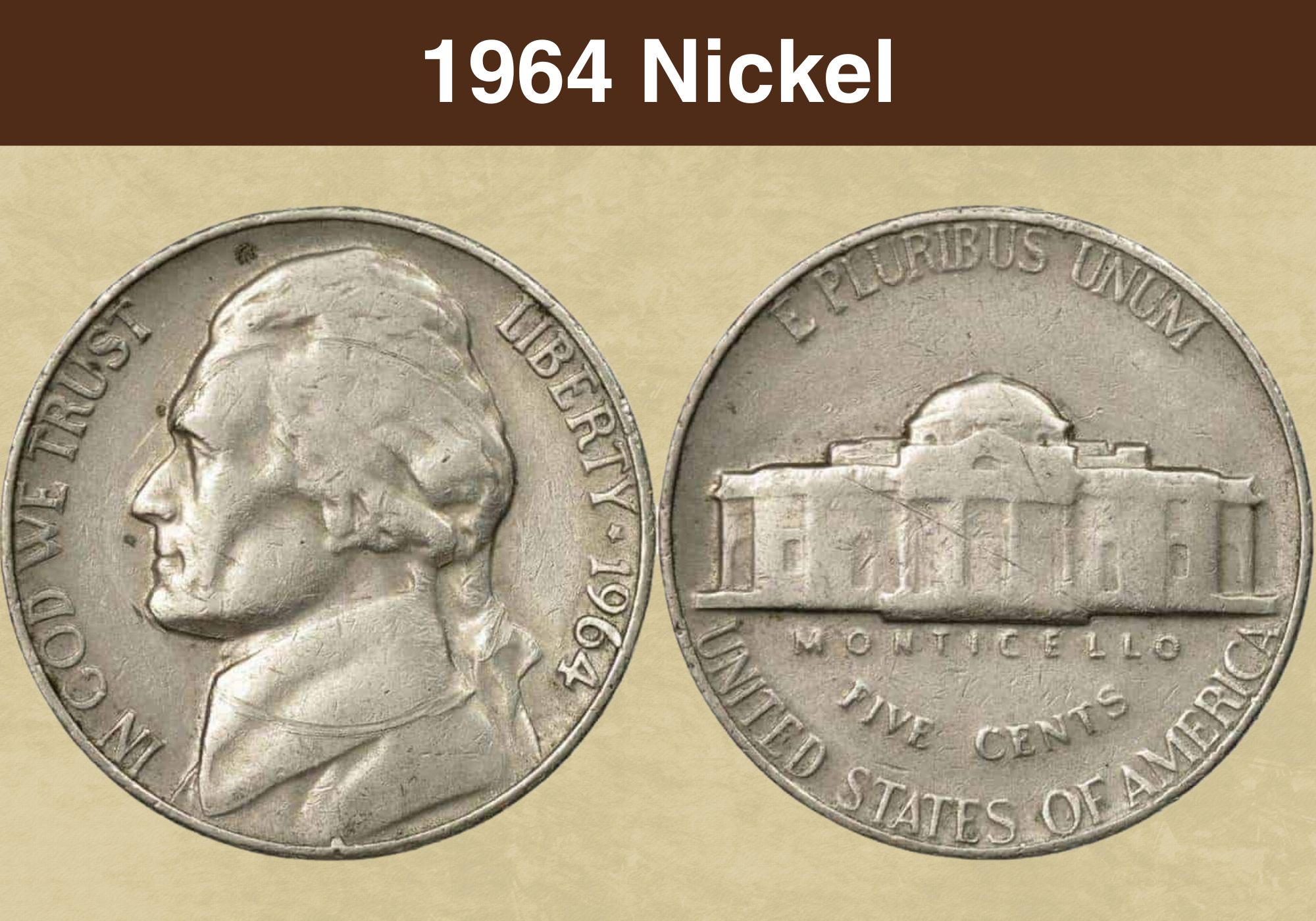
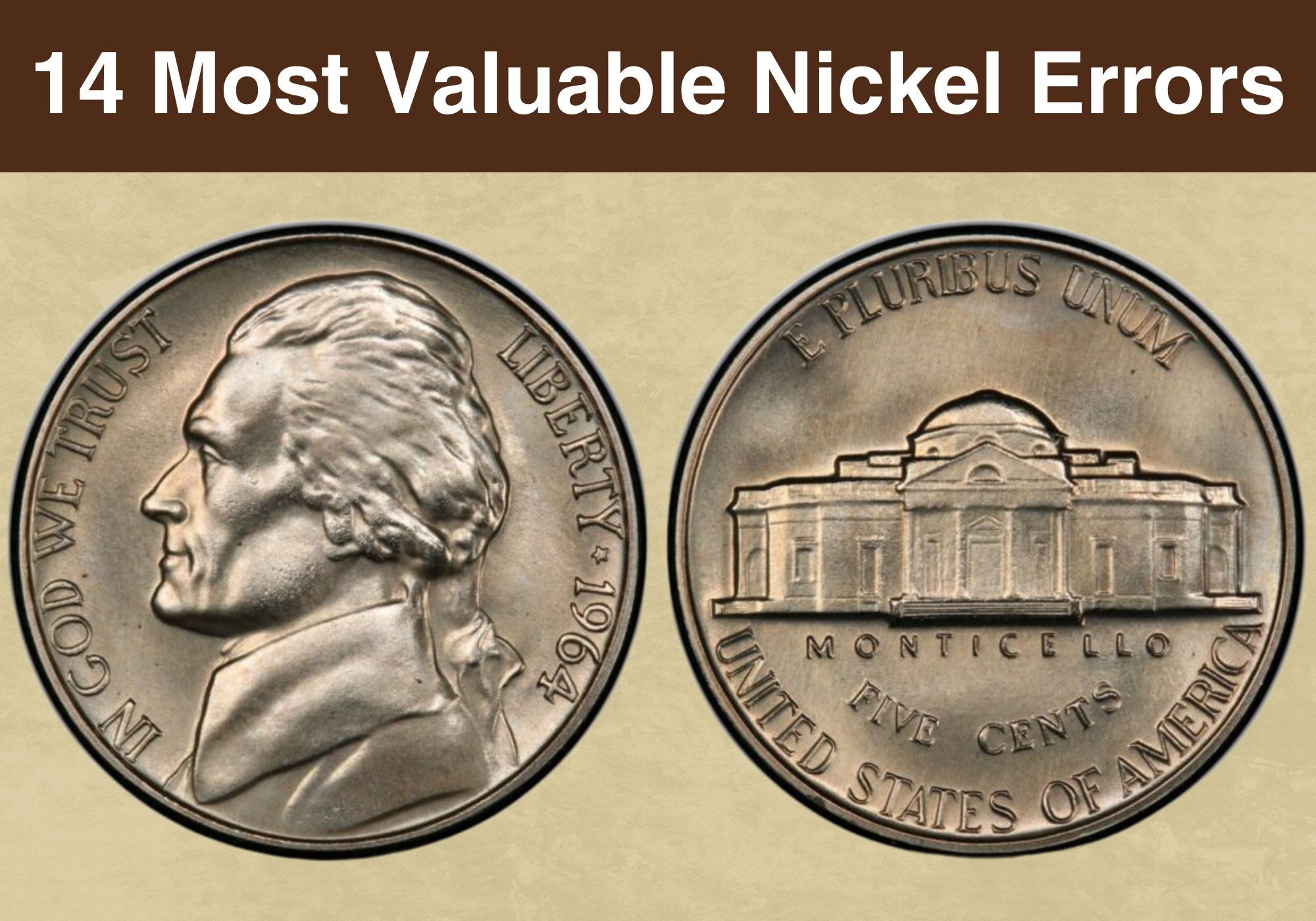
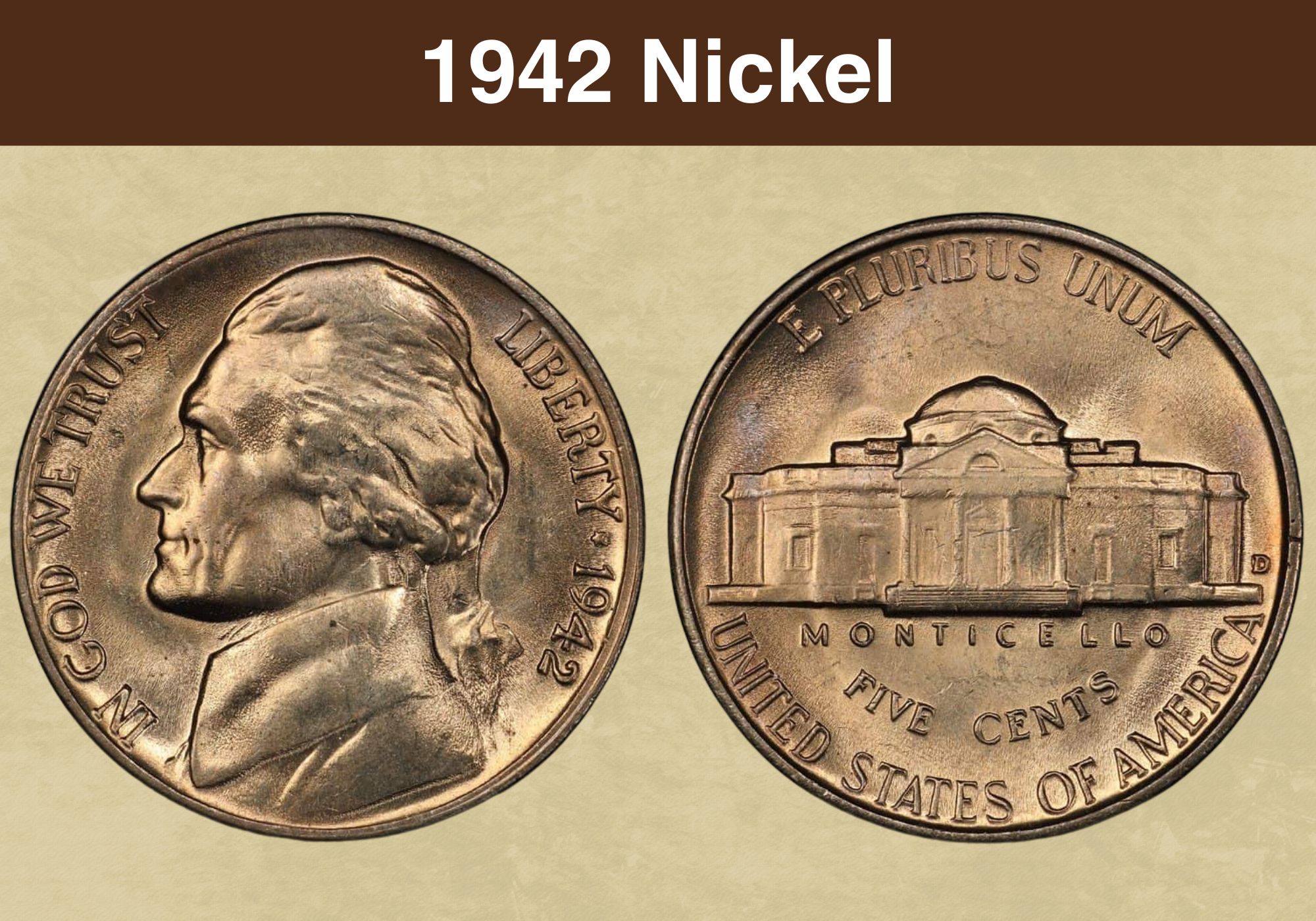
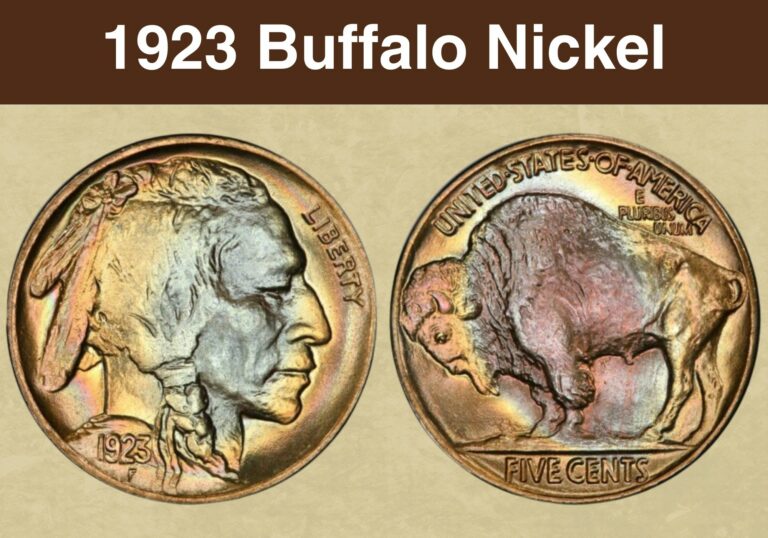
I have a 1946 nickel with no mint mark that has a warbly O in the word GOD. Can you tell me if that makes it valuable or not. Thank you